|
Confession: I am a slightly obnoxious food snob, as a number of friends and family members would readily attest. While I mostly keep my opinions to myself in order to avoid being insufferable (or, as the very wise John Lancaster once advised, Shut Up and Eat), I am shamelessly, ruthlessly judgemental when it comes to what restaurants put on my plate. I didn’t mean to turn out this way, but writing about places like this for a living pretty much ruins you. All this probably explains why I found myself initially frustrated in Berlin. I couldn’t quite wrap my brain around the fact that I had swapped Bangkok’s tremendous, affordable street food for currywurst and döner kebabs. It wasn’t that the restaurants were terrible, but all too often the concept seemed to exceed the execution. There were too many faddish “ethnic” places peddling insipid versions of Asian fusion or Mexican dishes, too many food trucks selling soggy, €6 avocado toast. Plenty of plates seemed like they were cooked for Instagrammers rather than diners; a stone-cold croque madame with congealed béchamel, tempura-stuffed sushi with pointless garnishes. One heavily hyped brunch place (which shall remain nameless) even pre-cooks all of its dishes (even the pancakes) before reheating them and artfully arranging them on wooden boards. Thankfully, after almost two years (!) in the city, I know my way around the restaurant scene a bit better and I’ve found a lot to love. While the variety of cuisines available here is perhaps not on the level of, say, London (where else could you find mind-blowing Thai-style wood-fire barbecue, sushi/yakitori and Michelin-starred Indian?), there are terrific things being done, often by very young chefs. Christoph Hauser and Michael Köhle. Photo courtesy of Florian Bolk and Herz & Niere. A couple months ago, I was lucky enough to chat with Michael Köhle of Herz & Niere, one of the most ambitious, earnest places I’ve visited in ages. Labels like “locavore” or “nose-to-tail” are tossed around so often that they don’t really do it justice, though you could certainly apply them here. This is a restaurant that fastidiously sources every piece of meat, fish or produce that lands on the table. They also make everything from scratch, from quince and rhubarb juices to dozens of varieties of pickles, preserves, charcuterie and bread. Whether growing their own produce or stuffing their own sausages, everything is done with the kind of obsessive attention to detail that only comes from genuine enthusiasm. When I visited the restaurant unannounced as a customer, I was struck by how little of this is written on the menu. Unlike countless places that wax poetic about their farm-to-table philosophy and organic produce, Herz & Niere lets the quality of the food speak for itself. It’s a wise choice—nothing I ate was anything less than spectacular. It was enough to make my jaded inner food snob, finally, shut up and eat. While there are doubtless dozens of other worthy restaurants in the city, I’d like to share a short selection of my favorites. This is by no means a definitive list, but these are places that I find myself going back to again and again. Did I miss anything? I'm always looking for new spots to try and would love to hear your thoughts. Pantry Everything at this popular Mitte spot is sourced from within a 100-kilometer radius. It’s not the first restaurant to do this, but with generous, beautifully plated portions, it certainly does it well. Gasthaus Figl Housed in a refurbished Kneipe, Gasthaus Figl has some of the best Schweinebraten and pizzas in the city. It seems like an odd combination, but somehow it works, especially when it comes to the Flammkuchen-inspired creations. Il Casolare Another pizza place, this one decidedly Italian. The small, forever packed space has a bit of a punk vibe and the thin-crust pies are some of the best in town. Extra points for the location near a canal bridge and outdoor seating in summer. Grimmstraße 30; + 49 30 69 506 610 Grill Royal If you want to live it up, this is the place to do it. The prices border on obscene, but with huge hunks of red meat and a glitzy clientele, it certainly makes for a memorable meal. Fes A welcome newcomer to my neighborhood, this place offers a more upscale take on do-it-yourself Turkish barbecue. I've come here often enough that the staff actually ask if I want "the usual." Adana Grill-Haus The surroundings are gritty, the lighting gruesome and the wine list nonexistent, but heaping portions of charred lamb, salads and mezze make this my one of my favorite Turkish spots in the city. Grünfisch Sicilian to the core, this trattoria has an excellent, reasonably priced southern Italian wine list and seasonal menus. Jolesch I love Austrian food and this is the place to go for gut-busting Schnitzel and Kaiserschmarrn. The restaurant offers both traditional staples and contemporary, lighter reinterpretations. Heißer Hobel While I’m wary of anything that comes out of a truck at this point, this Käsespätzle wagon is one of the best things ever. Florian Rohrmoser uses only Bergkäse made by his family and prepares all the dumplings to order. As a bonus, the portions are more manageable than traditional Bavarian ones, making it easier to enjoy all that gooey richness. Cocolo Ramen (Kreuzberg) It will never take the place of Bankara in my book, but Cocolo offers a very credible ramen in a lovely canalside setting. When I miss Asia (i.e. at least once a week), I make a beeline for the bar counter. Knofi I’ve yet to find a satisfactory place for traditional brunch here, but with Knofi, a Turkish-style deli in Bergmannkiez, I may never need one. The Mediterranean pastes here come in flavors like beet-mascarpone, jalapeno-sheep’s milk cheese, and chili-walnut. Al Contadino Sotto Le Stelle Apparently Brangelina are fans of this Mitte trattoria and mozzarella bar, though the vibe here is resolutely unpretentious. Order a cheese tasting, a bottle of whatever your waiter recommends, and you’re in for a pretty great evening. Osteria No.1 One of the oldest proper Italian restaurants in the city, this courtyard in Bergmannkiez is the perfect spot for aperitivi in summer. Wonderful, rustic dishes that I would happily eat on a daily basis. Beuster Bar Technically, this is more of a bar than a restaurant, but the menu has everything I ever want for a late, boozy night. Specials rotate, but you can never go wrong with the beef tartare with shoestring fries. It’s located on Weserstraße, making it a good place to fuel up before checking out some of the neighboring cocktail spots. Schiller Burger With so many burger places in Berlin, I would never presume to declare one "the best." Still, this classic in Schillerkiez is my current go-to (even if it can't match Burgermeister's atmosphere) for the sweet potato fries, homemade buns and respectable veggie options. The Kitchen Store A good salad is a rare commodity in these parts, which is why everyone was so excited with the arrival of Soho House’s casual eatery. Seasonal, inventive and never boring, these greens have me crossing town on a regular basis. The surrounding store is full of the kind of drool-worthy, pricey lifestyle items I wish I were cool enough to own. Kimchi Princess Not particularly authentic, but fun and funky Korean option near Kottbusser Tor. The barbecue is a clear standout and a good option for a large group. Dao I interviewed Meo, the owner and head chef of Dao, for an article for Slow Travel Berlin a while ago, and the restaurant has remained my top pick for authentic Thai since. It's hard not to be impressed by a charismatic, savvy female entrepreneur who taught herself impeccable German, but even without knowing her backstory, I would gladly make the trek to Charlottenburg for her curries. Cuore di Vetro One thing Berlin excels at is ice cream (this coming from someone who lived in Bologna). I wrote a short piece about some of the best shops last year, and while I love each and every one, this charmer, run by the nicest Italian couple you’ll ever meet, is still my favorite. Café Einstein Stammhaus The best apple strudel in the city in a beautifully renovated building. It’s great all year round, but especially nice in summer when the garden is open. Nur Gemüse Kebap Okay, I know I took a dig at döner earlier, but these guys are great. Think Mustafa’s, minus the lines and with much friendlier owners. Turnover is high, which means the meat, veggies and homemade sauces are incredibly fresh. One of the rare specimens that is just as enjoyable sober as it is at the tail end of regrettable night out. Seriously, how could you not like a restaurant team like this? Photo courtesy of Florian Bolk and Herz & Niere.
2 Comments
Prior to my year abroad in Wuhan, an industrialized city of 9 million in the center of the country, “China” was more or less an abstract concept to me. I had read about the censorship, environmental and human rights concerns; I had watched the bombastic spectacle of the 2008 Beijing Olympics; I had spoken with friends from Hong Kong or Singapore who visited the mainland frequently; I had studied pieces of its tumultuous history. It was all much too big, too far and too foreign for it to resonate on an emotional level though. How can one connect with more than 1.3 billion strangers? It wasn’t until I touched down in Shanghai and later in my far less westernized adopted hometown that certain things started to sink in. The sheer scale of the cities is daunting—buildings in Beijing appear closer than they are due to their impossible, improbable size. The crush of a seemingly infinite number of bodies at every train station, on every public holiday, at every monument, makes the mind reel. “China has too many people,” I was often told, and there is a constant sense that there might not be enough resources for everyone. As a teacher at a large university, my actions were monitored at all times. There were cameras in my classroom, cameras in the halls, cameras throughout the campus and cameras near my apartment. On each floor of each school building, a man or woman sat blankly staring at a moving black-and-white wall of security footage. And while the concept that all digital communications are subject to government scrutiny now, sadly, is no longer shocking, in 2010 it was unsettling to filter all email and Skype messages, even when using a VPN. During this time, Ai Weiwei was very much a name on everyone’s lips. He had become increasingly vocal in the wake of the 2008 Sichuan earthquake and, though his international prominence protected him, many whispered that his actions would not be tolerated for long. Liu Xiaobo had already been imprisoned and the government was cracking down on human rights activists previously thought to be immune. I make no pretense of being an expert on this vast and vastly complex nation, but I have a deep respect for the courage it takes to speak out there. Even then in Wuhan, there were small signs of subversion—“1989” scrawled on walls, hushed political discussions, covert reading of uncensored foreign publications, students throwing their Communist party pins to the ground. Even the smallest actions were done carefully, with the knowledge that there might be consequences. And though ordinary citizens could never dare to do what famous artists did, Ai Weiwei's public provocations had a powerful impact. All of this is my rather long-winded way of saying that I admire what the artist was willing to risk and what he has been able to accomplish. Purely by coincidence, I bumped into the man himself towards the tail end of summer in Berlin. He had recently arrived in the city and had stopped for a drink at Café am Neuen See. He’s a bear of a man and a number of other guests had taken note of his presence and already stopped by to say hello. Patiently, politely, he took the time to greet them as they came. I didn’t want to bother him for long and I certainly didn’t want to inflict my bastardized Mandarin on him, but it was an honor to shake his hand and listen to him, however briefly. As much as I admire him on a personal level though, I had less of a fully developed opinion on his actual art. I had read about the concepts behind his major works, but seeing a little clipping in a newspaper is a poor substitute and I was eager to get a look at the real thing. So on a recent visit to London, I made sure to stop by the Royal Academy of Arts for his current exhibition (through December 13). Thoughtfull, ambitious and, for me at least, moving, it’s worth seeking out (be sure to book ahead) if you have the opportunity to see it. I won’t bother with a full blow-by-blow, as more knowledgeable individuals have already done that, but here were a few of the highlights. StraightInterestingly, many of the workers who were hammering away at these for years had no idea what the idea behind the project was or the significance/origin of the materials. By far the most powerful piece for me, even if it’s not as aesthetically appealing as some of the others. The 90 metric tonnes of rusted rebar here were collected from the fallen schools in the 2008 Sichuan earthquake, hammered over 200 times each until almost returned to their original state, then laid out in a kind of eerie landscape juxtaposed with the names of the dead children. There’s a palpable feeling of grief and rage upon entering the room, even before delving into the commentary. He XieThis one was one of my favorites, primarily because at first glance it appears to be something else. The pile of thousands of brightly colored river crabs initially looks like a heap of cheap, mass-produced toys. In reality, each of these individually crafted porcelain crustaceans took a great deal of labor to produce. He xie, the word for river crabs, sounds like the Mandarin word for “harmony,” which is often used as slang for government propaganda. On the night before the demolition of his Shanghai studio, Ai Weiwei invited everyone to a studio party to feast on he xie. A good 800 turned up in support, even though the artist himself could not be present. TreeImmense and immersive. More "trees" can be found outside the museum. A huge installation of twisting branches and trunks formed from old temple pillars. From above, it resembles a map of China (a recurring theme in other works such as Bed), with two conjoined stools standing in for Taiwan. Marble StrollerFor me, his works in jade and marble, which include sex toys, handcuffs and this intricate stroller on a field of thousands of unique blades of grass, call into question the idea of an artist versus an artisan. One of the things I find most interesting about classical painting or sculpture is the actual technique that went into it. I like examining the brushstrokes on a Velasquez or the chisel marks on an unfinished Michelangelo. Most of the manual labor in Ai Weiwei’s work, however, is done by other highly skilled craftsmen. Outsourcing some of the more repetitive tasks isn’t that new though—the grunt work of painting backgrounds and details in works by Rubens and other old masters was often done by apprentices or lesser-known artists from their studios—and the technical skill of others here allows the artist to realize a more ambitious vision than he could produce alone. This particular item was inspired by the government's surveillance of his son. S.A.C.R.E.D.One of the most literal of the collection, this series of six dioramas, each one half the size of the actual cell where the artist spent 81 harrowing days, S.A.C.R.E.D. is easily one of the most uncomfortable. Visitors peer through peepholes into scenes from his personal hell, including eating, sleeping, showering and interrogation, all while accompanied by two guards. There’s a voyeuristic feeling to it all and the meticulous attention to detail makes it all too real. I found the custom-made wallpaper work Golden Age, with the Twitter symbol and security cameras, to be a bit heavy-handed when paired with this particular piece, although it’s an interesting work in its own right. Bicycle Chandelier Visually speaking, this one is a stunner and there’s a reason the curators saved it for last. The classic Chinese bicycle frames that make up the crystal chandelier nicely tie in thematically with his other repurposed works.
|
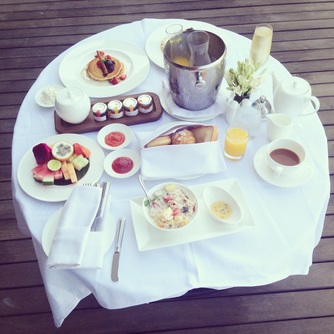
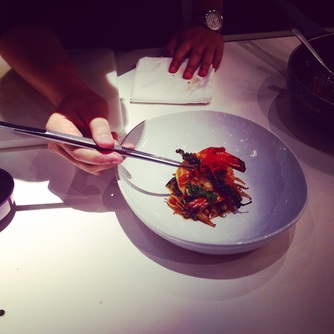
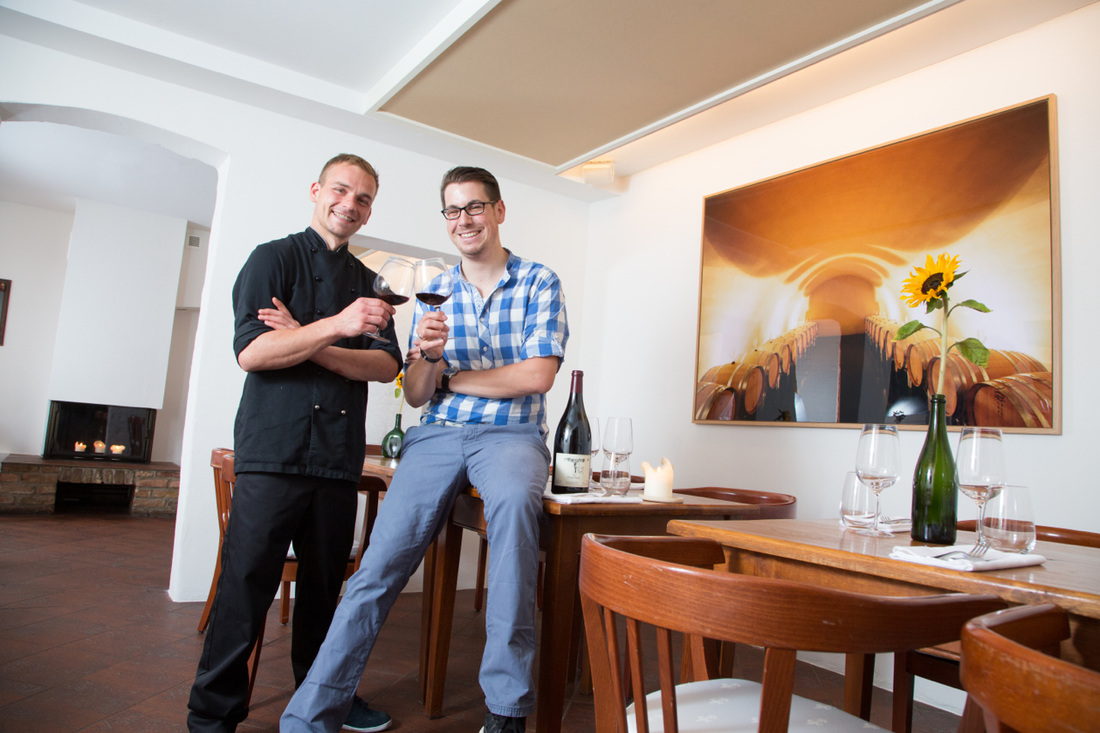
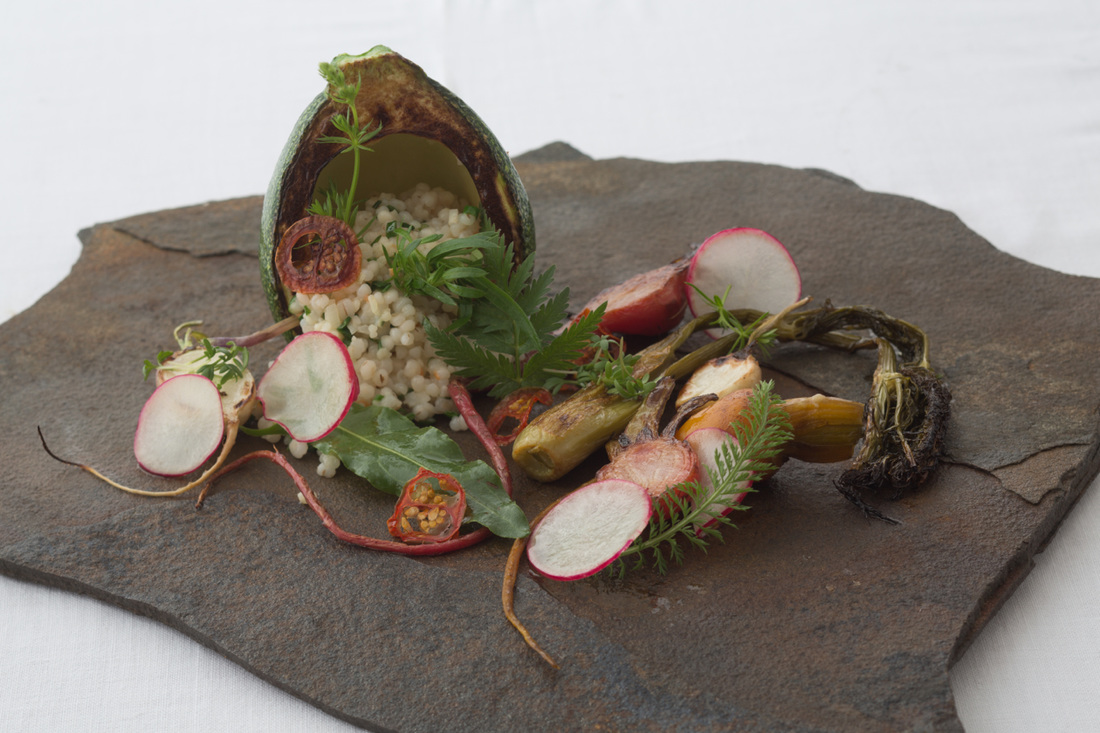
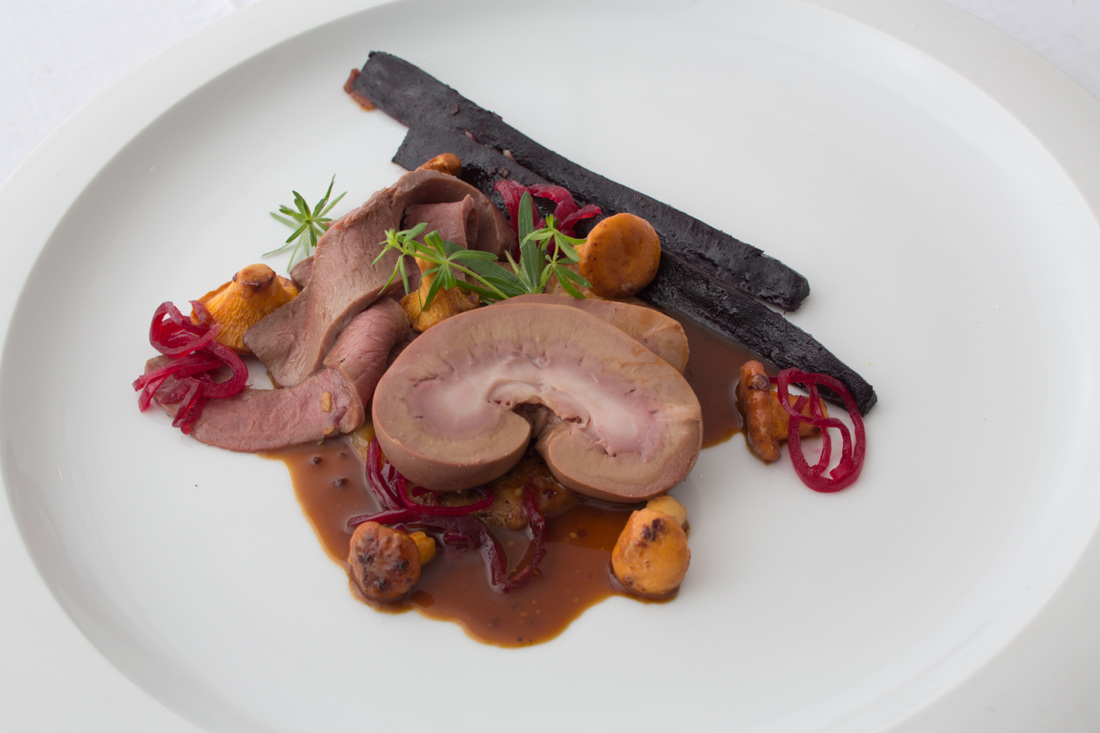
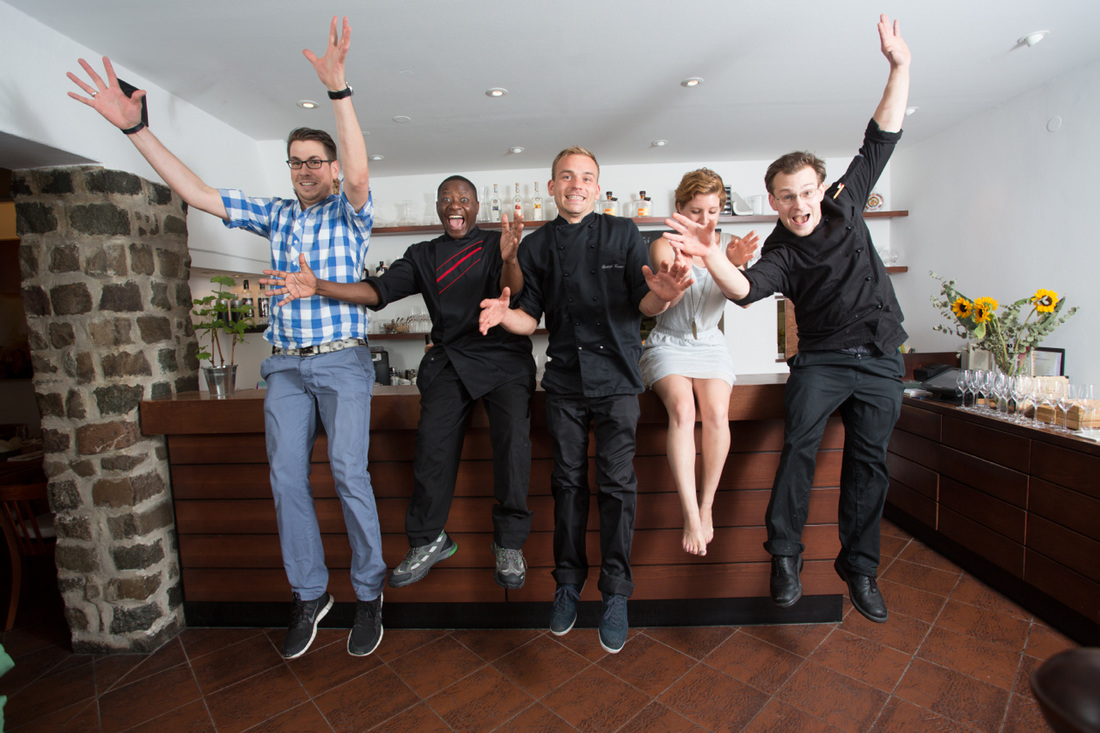
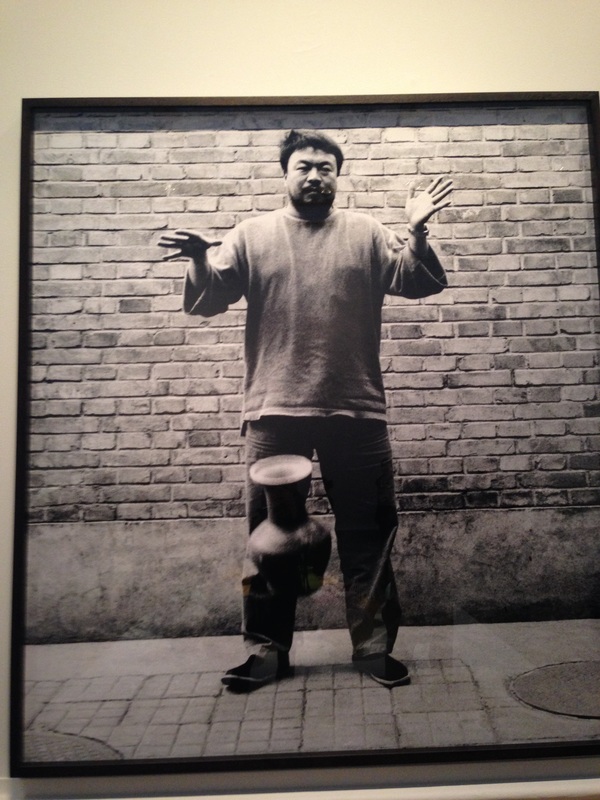
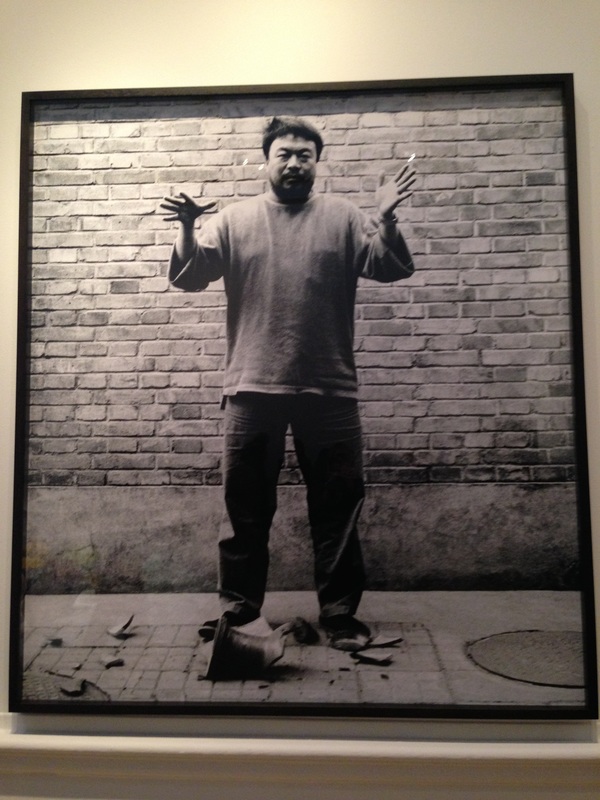
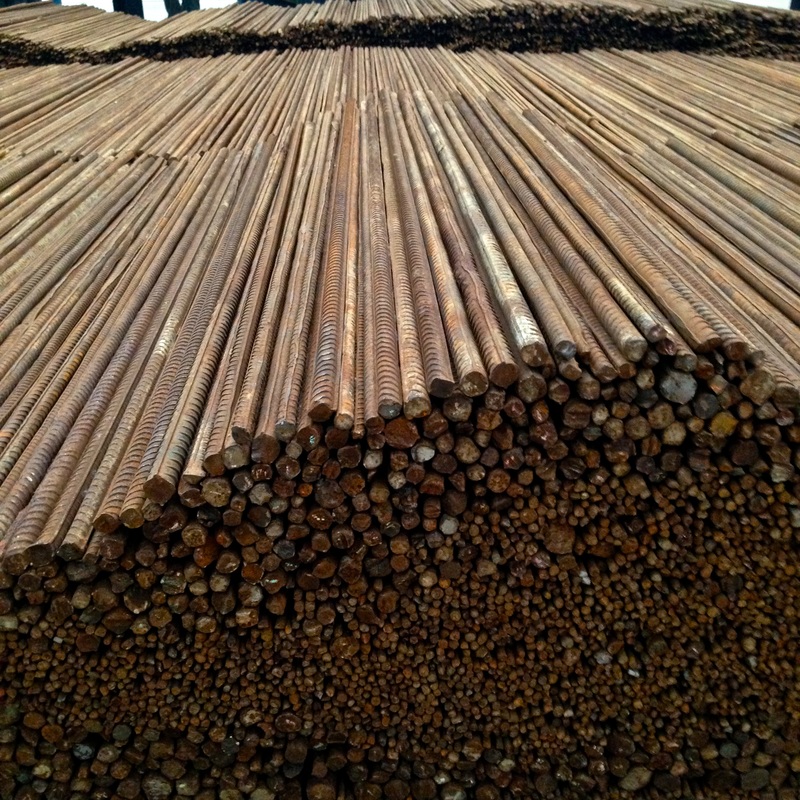
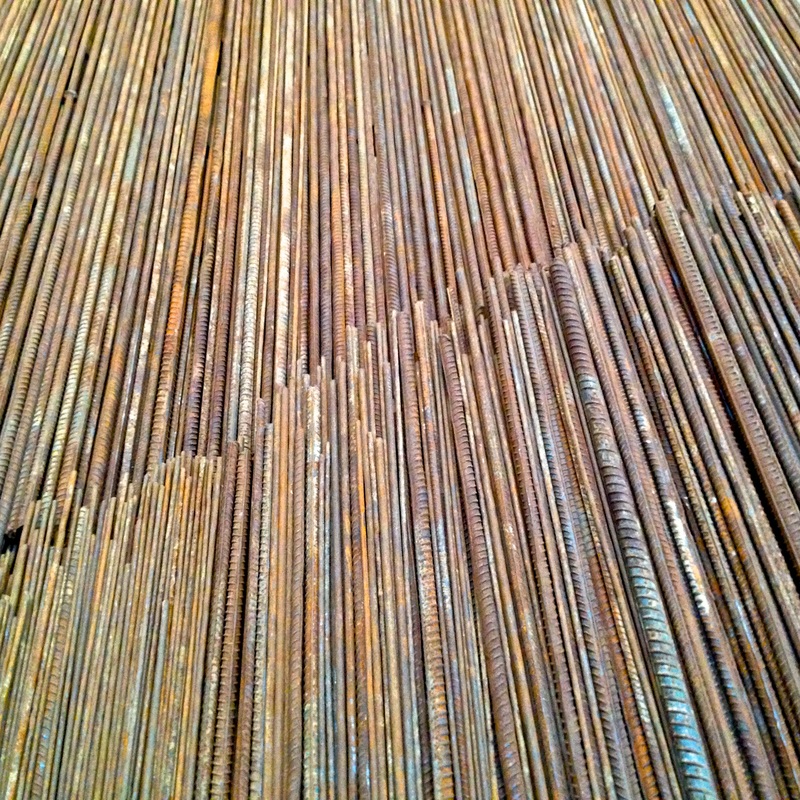
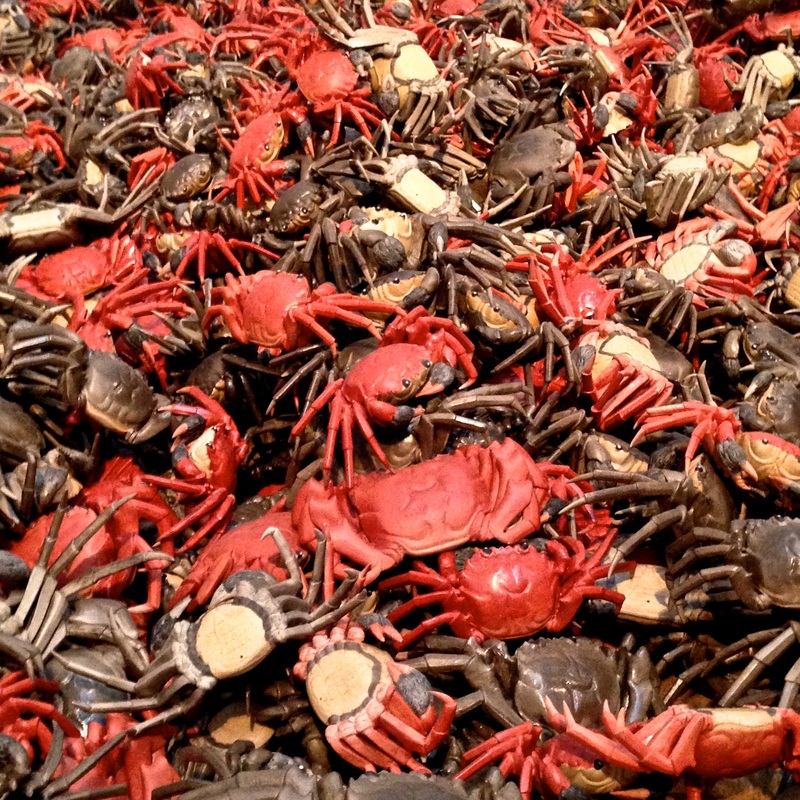
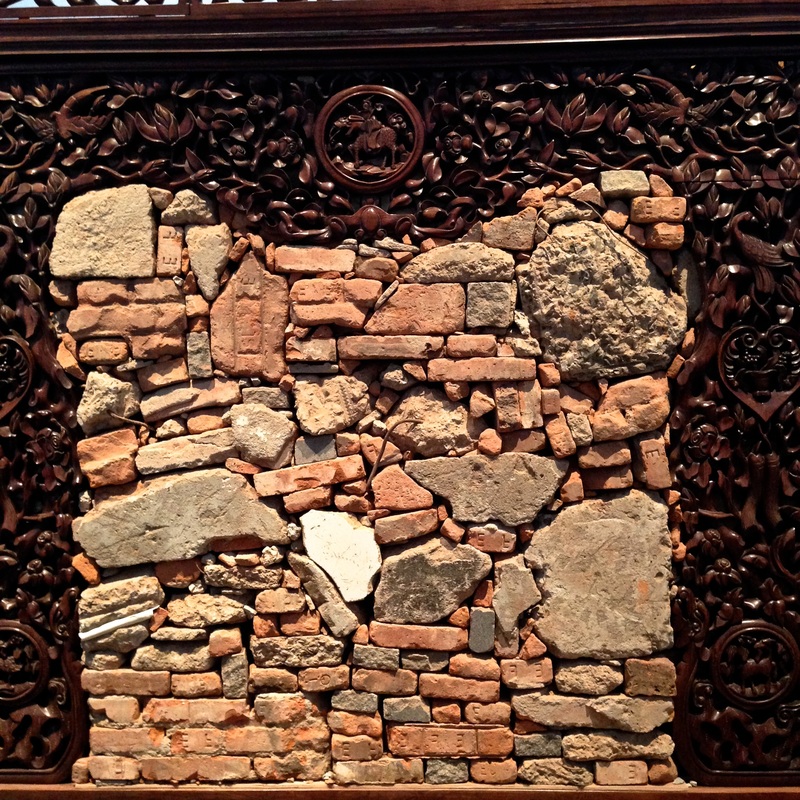
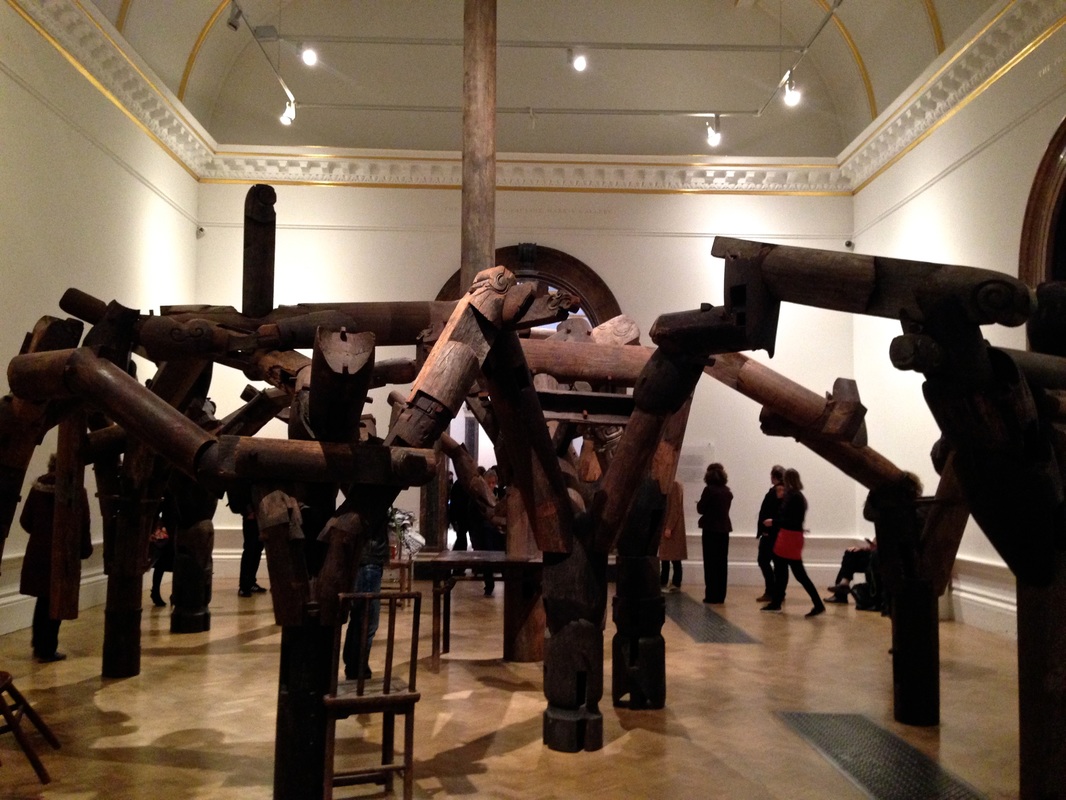
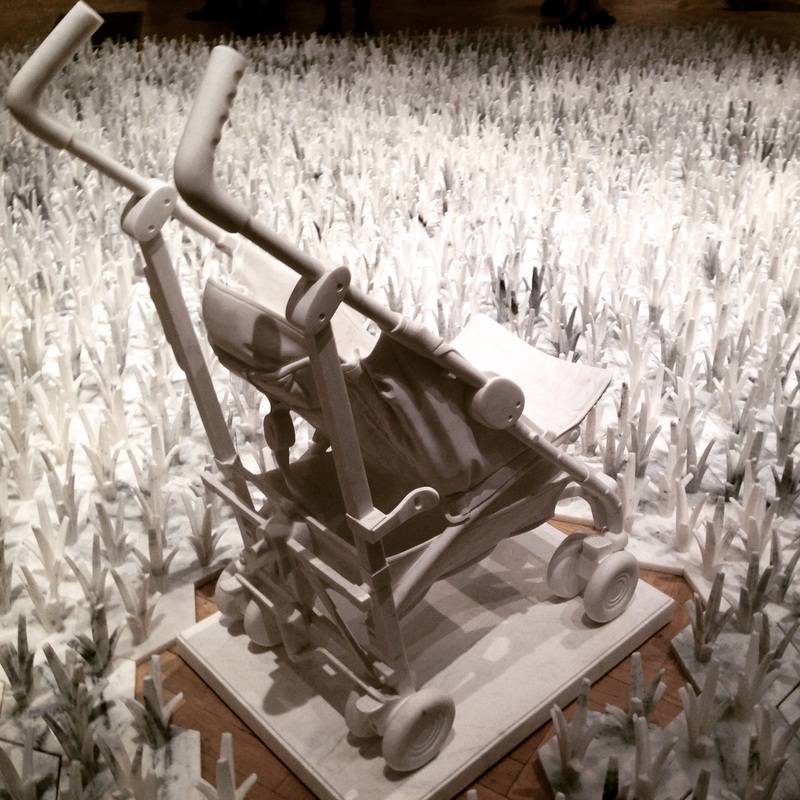

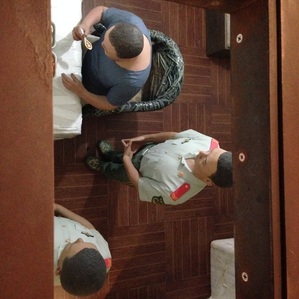
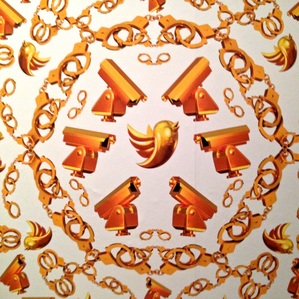
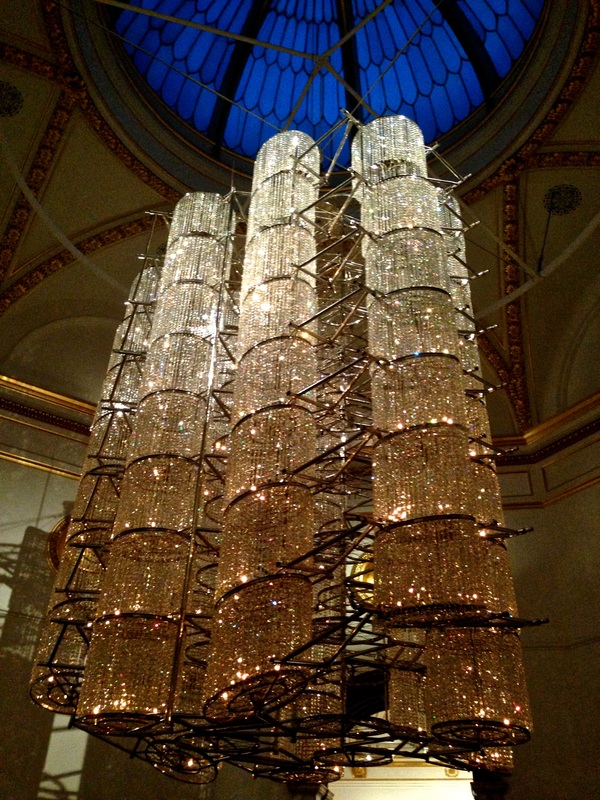
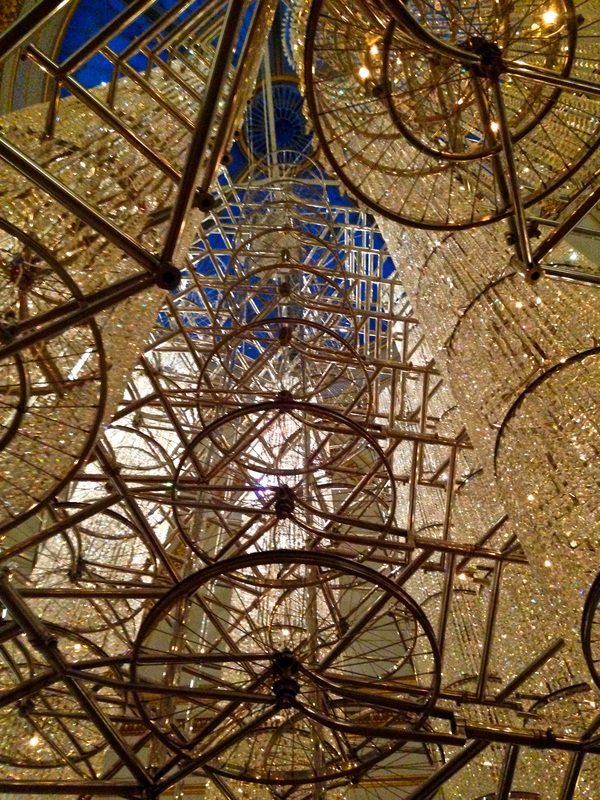
 RSS Feed
RSS Feed